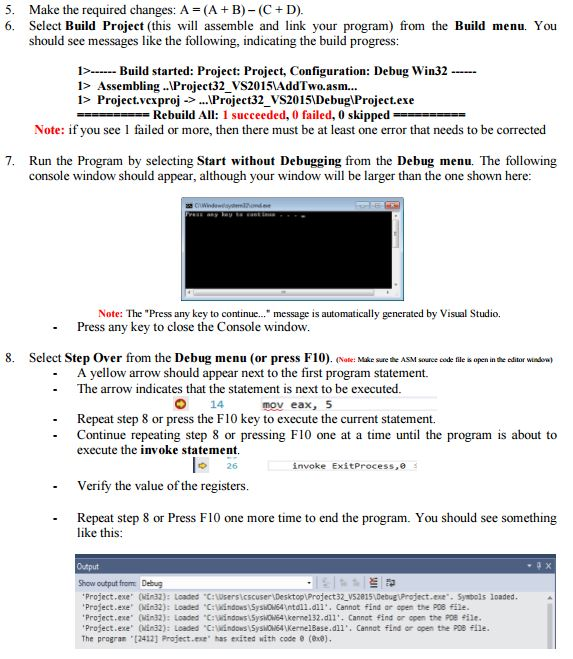
The VCDebugSettings interface is still present in Visual C++ 2010, but deprecated since it did not have the isolated set of properties per-debugger. In Visual C++ 2010 we’ve isolated each debugger’s properties so they are independent of one another. This interface had only a small set of properties, many of which were overloaded to control several different debuggers (local, remote, web browser, etc.) so these properties could not be set for a particular debugger without risk of impacting other debuggers. In Visual C++ 2008 and earlier, debugger properties were accessed using VCDebugSettings.

user file instead of the project file so that you don’t have to worry about that detail.

The Rule.DataSource tag in the debugger_*.xml rule files tell the IVCRulePropertyStorage to persist to the. This doesn’t require any special coding on your part-you just acquire the IVCRulePropertyStorage object from VCConfiguration the same as you would for other properties. There are a couple of interesting points to note with regard to properties that configure the debugger.ĭebugger properties are stored in the project user file (*.er) rather than the project itself.
How to write c code in visual studio 2015 free#
The Rule file allows you to capture all that per-property detail so that your code that invokes IVCRulePropertyStorage can be free of these implementation-specific details.Įvery single property available in the Visual C++ Property Pages dialog has a Rule file associated with it already, guaranteeing you convenient programmatic access to read or write any property you find there. user file), whether they are project properties or metadata on items or item definitions, etc. Why do we require these steps? Because it turns out that project properties have many attributes, such as where they should be persisted in the file, in which file (project or.
How to write c code in visual studio 2015 software#
If your software requires custom properties that do not exist in a Rule file, you need to create a Rule file that describes those properties and then import that file into your project, as described in Pavan’s Platform Extensibility – Part 1 and Part 2. The IVCRulePropertyStorage interface can only be used to read and write properties for which a Rule XAML file exists that is imported into the project. As you might expect, IVCRulePropertyStorage objects obtained from VCPropertySheet objects will read and write to that property sheet instead of the project. Not shown above is that you can also get this object from the VCPropertySheet::get_Rules collection, similarly to how we show above using VCConfiguration::get_Rules. As shown above, you can get this object from the VCConfiguration, a VC*Tool at the VCConfiguration level, or a VC*Tool at the VCFileConfiguration level. And exactly where those properties are read from or written to depends on where you acquired the IVCRulePropertyStorage object. So you see that IVCRulePropertyStorage provides very simple property read/write access. You can try copying and pasting this code into the Macro Editor yourself and running it while you have a new C++ console application open in the IDE.įont-family: consolas, “Courier New”, courier, monospace I’ve written this code as it might be seen in the IDE Macro Editor. While we’re in there, we’ll read and write a few other properties at the project and file level. Let’s read and write it using IVCRulePropertyStorage assuming you’ve got a DTE object for the project. This property isn’t available on VCConfiguration. One new property in Visual C++ 2010 is TargetExt, which specifies the filename extension of the primary output of a Visual C++ project. Rather than create new interfaces for the new properties, we’ve introduced a single new interface that will provide access to all project and tool properties: IVCRulePropertyStorage.īefore we dive into IVCRulePropertyStorage, you should take a few minutes to learn about Visual C++ "Rule” XAML files, as Pavan describes in his post: Platform Extensibility – Part 1.

These are COM interfaces and cannot be changed. If you’re writing a project template or Visual Studio extension that needs to programmatically read and write the new properties, you will find that these properties are not available on the standard VCConfiguration, VCCLCompilerTool, etc. Visual C++ 2010 introduces several new project and tool properties, and deprecates some old ones.


 0 kommentar(er)
0 kommentar(er)
